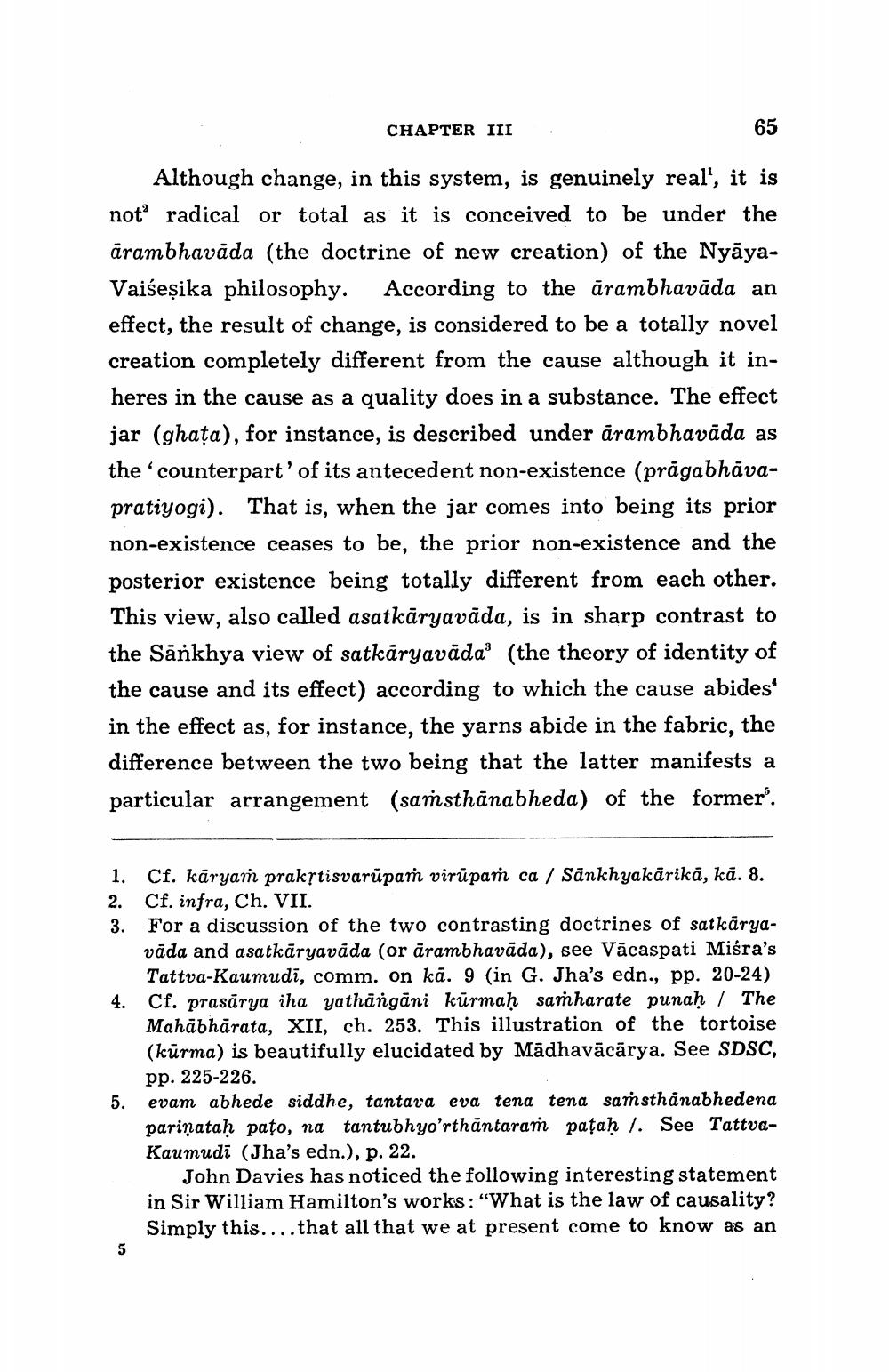________________
CHAPTER III
Although change, in this system, is genuinely real', it is not radical or total as it is conceived to be under the ārambhavāda (the doctrine of new creation) of the NyāyaVaiseșika philosophy. According to the ārambhavāda an effect, the result of change, is considered to be a totally novel creation completely different from the cause although it inheres in the cause as a quality does in a substance. The effect jar (ghața), for instance, is described under ārambhavāda as the counterpart' of its antecedent non-existence (prāgabhāvapratiyogi). That is, when the jar comes into being its prior non-existence ceases to be, the prior non-existence and the posterior existence being totally different from each other. This view, also called asatkāryavāda, is in sharp contrast to the Sārkhya view of satkāryavāda' (the theory of identity of the cause and its effect) according to which the cause abides in the effect as, for instance, the yarns abide in the fabric, the difference between the two being that the latter manifests a particular arrangement (samsthānabheda) of the former'.
1. Cf. kāryam prakstisvarūpaṁ virūpam ca / Sānkhyakārikā, kā. 8. 2. Cf. infra, Ch. VII. 3. For a discussion of the two contrasting doctrines of satkārya
vāda and asatkāryavāda (or ārambhavāda), see Vācaspati Miśra's
Tattva-Kaumudi, comm. on kā. 9 (in G. Jha's edn., pp. 20-24) 4. Cf. prasārya iha yathāngāni kūrmaḥ samharate punaḥ / The
Mahābhārata, XII, ch. 253. This illustration of the tortoise (kūrma) is beautifully elucidated by Madhavācārya. See SDSC, pp. 225-226. evam abhede siddhe, tantava eva tena tena samsthānabhedena parinatah pato, na tantubhyo'rthāntaraṁ patah 1. See TattvaKaumudi (Jha's edn.), p. 22.
John Davies has noticed the following interesting statement in Sir William Hamilton's works: "What is the law of causality? Simply this....that all that we at present come to know as an




